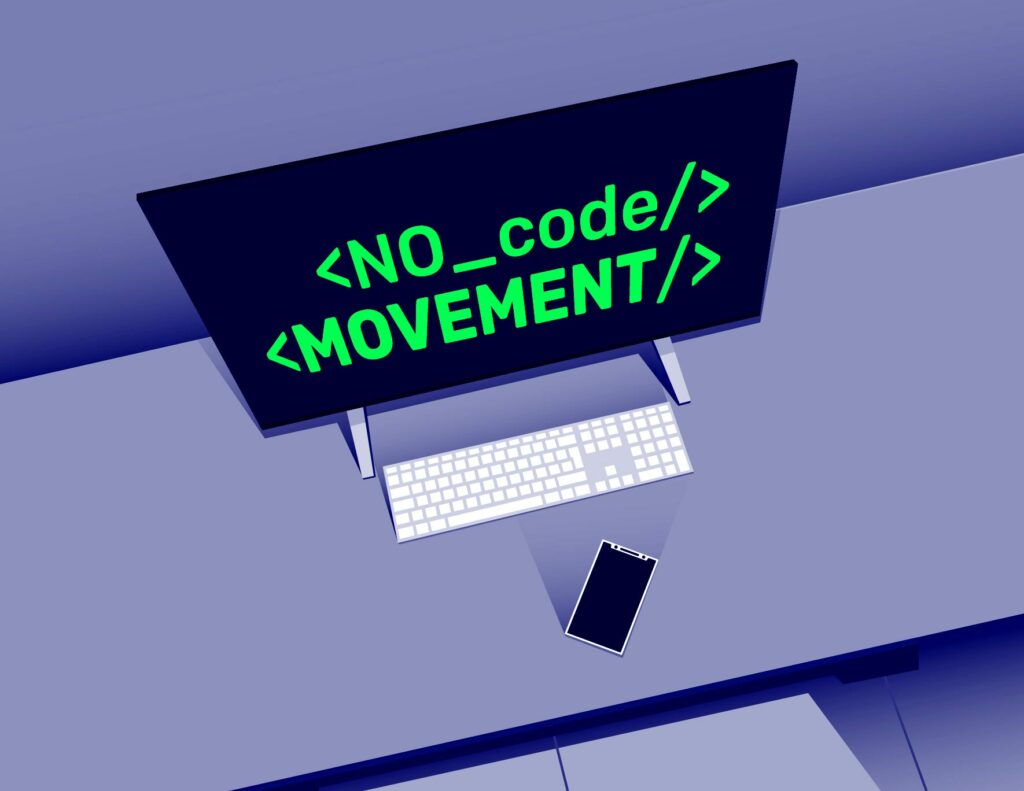Even though today, technology lies in all aspects of our lives, its creators and developers are very few, especially if we compare them with the rest of the professionals in the world. Sometimes the complexity of learning to code can be one barrier that keeps us from gaining more experts in the field.
Nevertheless, in recent years a new movement has made the development of apps or websites no longer a task that programmers can only carry out: The «no-code» movement.
«No-code» refers to using platforms and tools to create digital products without writing a single line of code. It is also an attempt to empower all who have ideas that can become a reality thanks to these tools, which allow the development of web pages, mobile applications, automation, chatbots, and online stores, just to mention a few. At the same time, it is possible to integrate payment gateways, databases, write code, and more to make a website or app even more functional. The options are endless. You can create marketplaces, Customer Relationship Management platforms, directories, and even clones of Twitter, Uber, and Facebook, among others.
The «no-code» development process consists in visually arranging the several elements that make up the app by dragging them in the correct order. These elements could be data, images, forms, maps, videos, etc.
The «no-code» movement’s goal is to democratize access to “software,” removing the barriers of learning to program to build tools, products, or services that can reach the public.
According to data from the Business Wire portal, the market for development platforms without code will grow to 21.2 billion dollars in 2022. However, to fully understand their growth, it must be considered that in 2017 they barely represented 3.8 billion.
97% of Fortune 500 companies are already implementing «no-code» solutions with a return on investment greater than 188%. By 2025, 70% of applications will have «no-code» components, and the market is projected to be worth $45.5 billion.
Currently, there is a global shortage of developers. Every year, the demand for programmers far exceeds those being trained. By 2026, the market will need an additional 12 million software developers; by 2030, the number will rise to 85 million (according to data from Entrepreneur magazine).
Obviously, «no-code» isn’t perfect. The possibilities are enormous, but they’re still unable to cover all cases and scenarios (nor does it pretend to). The «no-code» movement does not intend to position itself as one-size-fits-all; instead, it attacks small niches that can make life easier for themselves or the public.
This phenomenon will possibly end up creating more interest in the world of coding. As a result, more work will come up for programmers in the future, who must scale solutions that have already been validated through «no-code» processes but still need real development to bring out products to a massive audience. As a result, developers will always be required since it is impossible to cover all demands with tools that simplify software construction by its very definition.
In any case, this movement achieves that the testing cycles can accelerate, setting up a fully functional startup in 3 weeks without the need to code, allowing it to achieve great success and solve a market necessity.
At last, what is certain is that «no-code» will be inescapable, giving us a lot to talk about in the near future.


